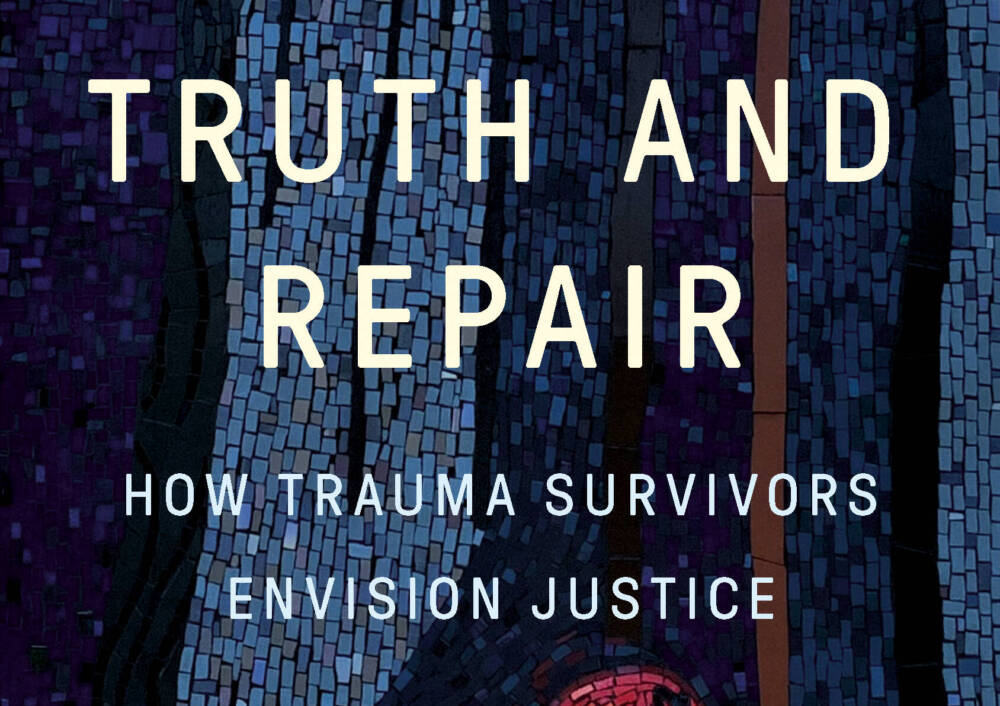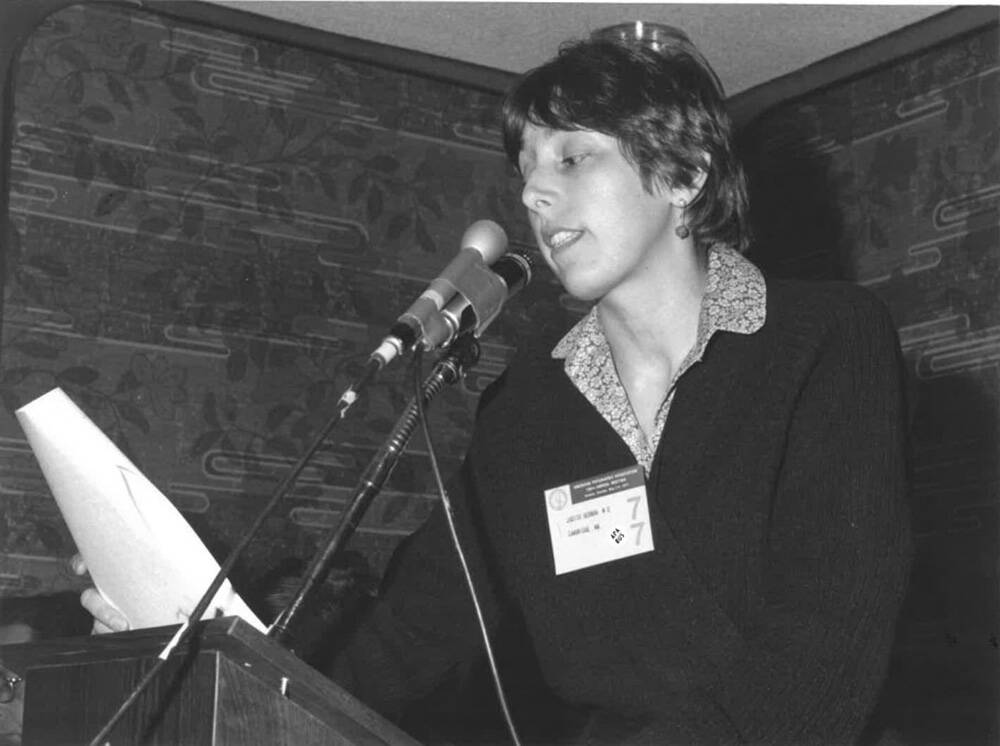Advertisement
Psychiatrist Judith Herman on trauma, justice for survivors and her passion for social justice

Editor's note: This story includes descriptions of domestic violence and sexual trauma.
Psychiatrist Judith Herman changed the way we view trauma. When she was studying to become a psychiatrist in the 1970s, the commonly held belief was only men returning from war could experience trauma.
But Herman recognized similarities between the symptoms displayed by Vietnam veterans returning from combat and victims of rape and incest, often women.
“My first two patients on the inpatient service where began my psychiatric residency were working-class women who had made suicide attempts, and both of them gave histories of father-daughter incest.,” Herman says. “We wrote a paper. People made Xerox copies and it went hand-to-hand. And we started getting letters from all over the country saying, ‘I thought I was the only one.’”
When Herman published her book “Trauma and Recovery” in 1992, it turned the world of psychiatry on its head. It introduced the idea of trauma stemming from sexual or domestic abuse, positing the idea that violence is violence and trauma is trauma, whether at home or at war.

Herman suffered a fall that sidelined her career soon after releasing her first book and watched research into trauma abound around her, including the bestselling book “The Body Keeps the Score” by Bessel van der Kolk. But as Herman recovered physically, she started her research back up in full swing.
More than 25 years since “Trauma and Recovery,” Herman has released a new book titled “Truth and Repair: How Trauma Survivors Envision Justice.” The book features interviews with trauma survivors and lays out pathways to justice and healing.
“The point of justice is to repair the harm that was done rather than to punish the offenders,” Herman says. “If the survivor is willing, the incentive for the offender might be that it would be a lot less punitive to acknowledge what he's done. The current system incentivizes him to just deny, deny, deny.”
Book excerpt: 'Truth and Repair: How Trauma Survivors Envision Justice'
By Judith Herman
When I first wrote the forgotten history of trauma, in Trauma and Recovery, I argued that the suffering of traumatized people is a matter not only of individual psychology but also, always, of social justice. Because the violence at the source of trauma aims at domination and oppression, even to recognize trauma, to name it, requires the historical context of broad social movements for human rights: for secular democracy, for the abolition of slavery, for women’s liberation, for an end to war. Posttraumatic stress disorder was recognized as a legitimate diagnosis in the United States only after Vietnam veterans threw their medals over the White House fence and testified that, even safely returned home, in their minds they were forever in Vietnam. Sexual violence was recognized as a worldwide plague only after women found their voices in the women’s liberation movement and testified to the hidden everyday crimes of rape, battery, and incest.
Advertisement
If traumatic disorders are afflictions of the powerless, then empowerment must be a central principle of recovery. If trauma shames and isolates, then recovery must take place in community. These are the central therapeutic insights of my work, and I believe they have held up well across cultures and over time.
In Trauma and Recovery, I traced the course of recovery from trauma roughly in three stages. In the first stage, the survivor must focus on the complex and demanding task of establishing safety in the present, with the goal of protection from further violence. Safety allows the survivor to recover from the terror that reduced her to abject submission and to regain a sense of agency. A sense of having some control and choice in daily life is in turn a prerequisite for further recovery. This is why even well-intentioned interventions by police and agents of the justice system can cause further harm when they take power and control away from the survivor and why legal interventions that respect and empower survivors are a just and healing way to make amends for the harms they have suffered.
In the second stage of recovery, the survivor can revisit the past in order to grieve and make meaning of the trauma. She will never be the same person she was before the traumatic events in her life, but out of her grief she can forge a new identity that neither denies her past nor allows it to define her entirely. Tracing the recovery of survivors over time, a large body of research has now documented facts that make intuitive sense: social support is a powerful predictor of good recovery, while social isolation is toxic. People cannot feel safe alone, and they cannot mourn and make meaning alone.
Mourning the past may seem endless, but it does come to an end. In the third stage, the survivor can refocus on the present and future, expanding and deepening her relationships with a wider community and her sense of possibility in life. Some extraordinary survivors, recognizing that their suffering is part of a much larger social problem, are able to transform the meaning of their trauma by making their stories a gift to others and by joining with others to seek a better world. They develop what my colleague and friend Robert Jay Lifton has called a “survivor mission.” Over the years, it has been my privilege to be a witness and ally of the many patients who have passed through these stages of recovery to reclaim their lives.
In recent years, I have begun to contemplate the idea of a fourth and final stage of recovery, and that is justice. If trauma is truly a social problem, and indeed it is, then recovery cannot be simply a private, individual matter. The wounds of trauma are not merely those caused by the perpetrators of violence and exploitation; the actions or inactions of bystanders—all those who are complicit in or who prefer not to know about the abuse or who blame the victims—often cause even deeper wounds. These wounds are part of the social ecology of violence, in which crimes against subordinated and marginalized people are rationalized, tolerated, or rendered invisible. If trauma originates in a fundamental injustice, then full healing must require repair through some measure of justice from the larger community.
In the course of their recovery, survivors inevitably confront many complicated questions about justice: Can they dare to tell their stories in public, and if so, can their truth be recognized by the community? Can the harm be repaired, and if so, what would that require? How can survivors and offenders go on living in the same community? What would it mean to hold offenders accountable? Is reconciliation something to be desired, and if so, how can it be achieved? How can the community pro- vide public safety and prevent future harm?
To try to answer these questions, I have, once more, listened to survivors. This book is about envisioning a better way of justice for all. I propose that survivors of violence, who know in their bones the truths that many others would prefer not to know, can lead the way to a new understanding of justice. The first step is simply to ask survivors what would make things right—or as right as possible—for them. This sounds like such a reasonable thing to do, but in practice, it is hardly ever done. Listening, therefore, turns out to be a radical act.
From "Truth and Repair: How Trauma Survivors Envision Justice" by Judith Herman, published by Basic Books, an imprint of Hachette Book Group. Copyright © 2023 by Judith Herman.
Karyn Miller-Medzon produced and edited this interview for broadcast with Todd Mundt and Robin Young. Grace Griffin adapted it for the web.
This segment aired on May 16, 2023.

